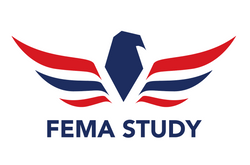
Introduction to FEMA Emergency Training Programs
FEMA, or the Federal Emergency Management Agency, offers a unique chance for college students to not just learn but also earn college credits through its Emergency Training Programs. These programs are all about preparing you for disaster situations, teaching valuable skills in crisis management, and understanding how to respond effectively in emergencies. What stands out is that FEMA courses are often free or very low cost. This means you can enhance your education, beef up your resume, and save some money on college credits at the same time. Through these programs, students get to dive into subjects like emergency planning, fire safety, and disaster recovery, among others. The beauty of it is that these credits can often be transferred to various colleges and universities, helping you speed up your path to graduation without breaking the bank. It’s a smart move for students aiming to blend practical skills with academic learning while keeping an eye on their future career in emergency management or a related field.
Understanding How FEMA Training Can Count Towards College Credits
FEMA training courses offer more than just valuable knowledge on managing emergencies. They can also help you rack up college credits, a handy bonus for anyone looking to advance their education without the traditional classroom setting’s time and expense. Various colleges and universities recognize FEMA’s Emergency Management Institute (EMI) Independent Study courses for credit. Here’s the simple breakdown: first, you pick and complete FEMA courses relevant to your academic goals. Each course has a specific credit value, often ranging from 1 to 3 credits, depending on the course’s complexity and length. After successfully completing a course, you request an official transcript from FEMA, then submit this to the college or university you’re attending or plan to attend. They’ll evaluate it against their credit requirements and determine if, and how many, credits you’ll receive. Keep in mind, policies on accepting FEMA credits vary by institution, so always check ahead with your school’s admissions or registrar’s office. This setup is a smart move for anyone in emergency management, public safety, homeland security, or related fields. Turning FEMA courses into college credits not only saves money but accelerates your path to a degree or certification in your chosen field.
The Range of Emergency Training Courses Available
FEMA, the Federal Emergency Management Agency, offers a wide array of emergency training courses. These courses cater to various aspects of disaster preparedness, response, recovery, and mitigation. The beauty is, many of these courses are free, and you can earn college credits that many institutions accept. From the essentials of emergency management to more specialized topics like handling hazardous materials or understanding the intricacies of the National Response Framework, there’s a course for everyone. You can find online courses that fit your schedule and interests. Whether you’re looking to beef up your resume, advance your career, or simply gain valuable skills that could be life-saving, FEMA’s got your back. The key is to explore their course catalog and pinpoint the courses that align with your goals and academic needs. Remember, it’s not just about earning credits; it’s about enhancing your ability to contribute meaningfully in times of crisis.
Eligibility Criteria for Earning College Credits through Emergency Training
Before jumping into emergency training programs with the hope of earning college credits, let’s ensure you meet the eligibility criteria. First off, you need to be enrolled or planning to enroll in a college that recognizes and accepts FEMA courses for credit. Not all institutions do, so check with your academic advisor or the admissions office. You should also have a high school diploma or its equivalent; this is a basic requirement for most post-secondary education paths. Additionally, some specific FEMA courses might have their own set of prerequisites—these can range from having a certain level of fitness to possessing prior experience in emergency management or a related field. It’s crucial to review the course descriptions carefully or reach out directly to the program administrators to get the lowdown on what you need to qualify. Remember, the goal is not just to take these courses for the sake of learning (which is, of course, important) but to ensure they actually count towards your degree. Ensure you’re in the clear with these criteria, and you’re on the right path to maximizing your college credits through FEMA emergency training programs.
Steps to Enroll in FEMA Emergency Training Programs
To start with FEMA’s emergency training programs, follow these steps. First, head to the FEMA Independent Study Program website. Find the course catalog to see available training options. Second, select a course that fits your interest or requirement. FEMA offers courses from basic to advanced levels in emergency management. Third, create an account on the FEMA SID (Student Identification) system if you don’t already have one. You’ll need a FEMA SID to take any courses. Fourth, enroll in the course you chose. Some courses are self-paced online, while others may be in-person or require a blend of both. Fifth, complete your chosen course at your own pace. After finishing, you’ll take an exam to test what you’ve learned. Sixth and lastly, upon passing the exam, you’ll receive a certificate. This certificate can sometimes be converted to college credits, depending on your school’s policies. Remember, FEMA courses are free, so they’re a cost-effective way to enhance your knowledge and potentially earn college credits.
Maximizing Your College Credits with Specific FEMA Courses
FEMA, short for the Federal Emergency Management Agency, offers a variety of emergency training courses. These aren’t just for professionals in emergency management. Many students don’t realize that these courses can also count as college credits. Here’s how you can make the most out of your FEMA courses for college credit. First, figure out which FEMA courses are recognized by your college. Not all institutions accept these credits, so check with your advisor. Typically, courses related to disaster preparedness, emergency management, and homeland security are more likely to be accepted. Second, understand that the American Council on Education (ACE) recommends college credit for many FEMA courses. This means once you complete a course, you may apply to have these credits transferred to your college. However, your college has the final say on whether these credits count towards your degree. Lastly, mix and match FEMA courses to fill elective slots in your major. Sometimes, specific FEMA courses can fulfill elective requirements, giving you both valuable knowledge and credit. Remember, planning is key. Make sure you’re taking FEMA courses that align with your degree program and that you’re following the correct process to transfer these credits. By doing so, you can save on tuition fees and potentially graduate sooner, all while gaining critical knowledge in emergency preparedness.
The Process of Transferring FEMA Credits to Your College
The journey of transferring FEMA credits to your college might seem daunting, but it’s pretty straightforward. First off, you need to complete a FEMA Emergency Management Institute (EMI) course. After you ace the course, FEMA awards you with credits through the American Council on Education (ACE). Here’s the simple part - you just need to request an official transcript from the ACE. They send this to your college.
Now, not all colleges accept these credits. It’s crucial to check with your college’s registrar or admissions office first. Ask them about their policy on transferring FEMA credits. If they give you the green light, submit the ACE transcript to them. They’ll review it and decide how many, if any, of these credits apply to your degree. Remember, each college has its rules, and some may only accept specific courses or limit the number of credits you can transfer. The secret sauce? Get in touch with your college early in the process. This way, you won’t waste time on courses that don’t bring you closer to your diploma.
Case Studies: Success Stories of Students Benefiting from FEMA Training
Students across the country are turning a keen eye toward FEMA’s Emergency Training Programs, discovering not only an unconventional way to enhance their resumes but also to rack up college credits. Take Sarah, for example, a criminal justice major, who found herself equipped with 18 additional credits after completing FEMA’s Independent Study courses, propelling her towards graduation quicker than her peers. Then there’s Alex, an environmental science student, who leveraged the specialized courses offered by FEMA to gain a unique edge in his field. Not only did these courses count towards his degree, but they also offered him invaluable, real-world knowledge about disaster response and environmental protection. The best part? Both students achieved this at a fraction of the cost of traditional college credits, highlighting FEMA’s programs as a cost-effective method for advancing education and career prospects. These stories illustrate the practical, dual benefits of FEMA’s training: valuable college credits and a bolster to one’s professional journey.
Overcoming Challenges in Transferring Credits
Transferring credits from FEMA Emergency Training Programs to your college isn’t always straightforward. Some colleges might not be familiar with these courses or how they fit into your degree. But don’t let this discourage you. Be proactive. First, talk to your college advisor; they’re there to help and can guide you on how to present your FEMA credits. It’s also a smart move to gather all your documentation, like course descriptions and certificates, to make your case stronger. If you hit a roadblock, consider reaching out to the American Council on Education (ACE) since they often evaluate these programs for credit equivalency. By staying persistent and well-prepared, you can turn your FEMA training into valuable college credits, moving you closer to your degree.
Conclusion: Leveraging Emergency Training for Your Education and Career
FEMA’s Emergency Training programs are more than just a way to prepare for disasters. They’re a stepping stone to enhancing your education and boosting your career journey. Think about it. Not only do you gain crucial knowledge in emergency management, but you also earn college credits. These credits can push you closer to your degree, potentially saving you time and money along the way. Plus, the skills you learn aren’t just for show. They make you more marketable. Imagine walking into a job interview with a resume that shouts, “I’m ready for anything.” Employers love that. In short, FEMA’s training programs offer a unique way to stand out, both academically and professionally. So, grab this opportunity. Your future self will thank you.

